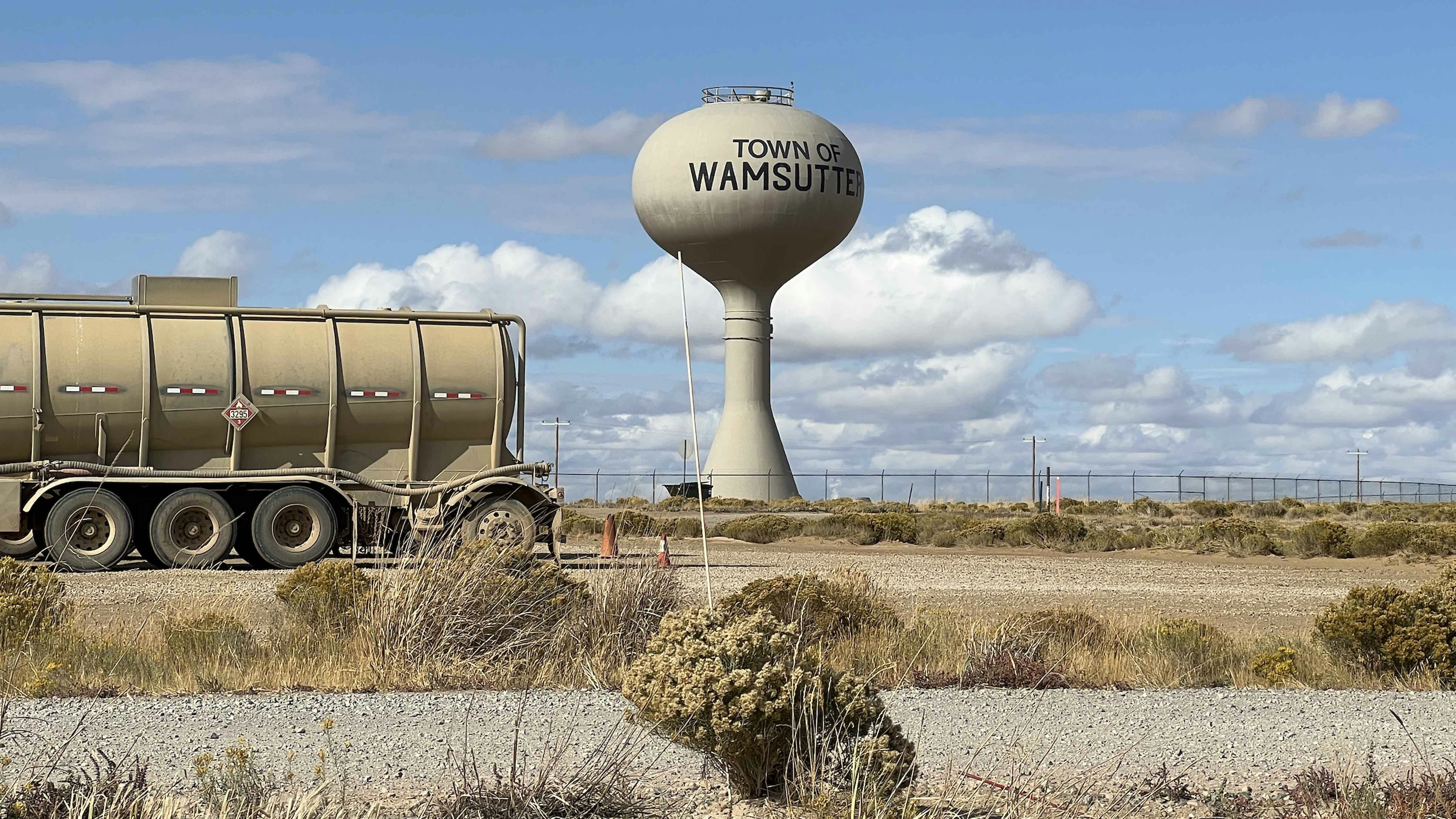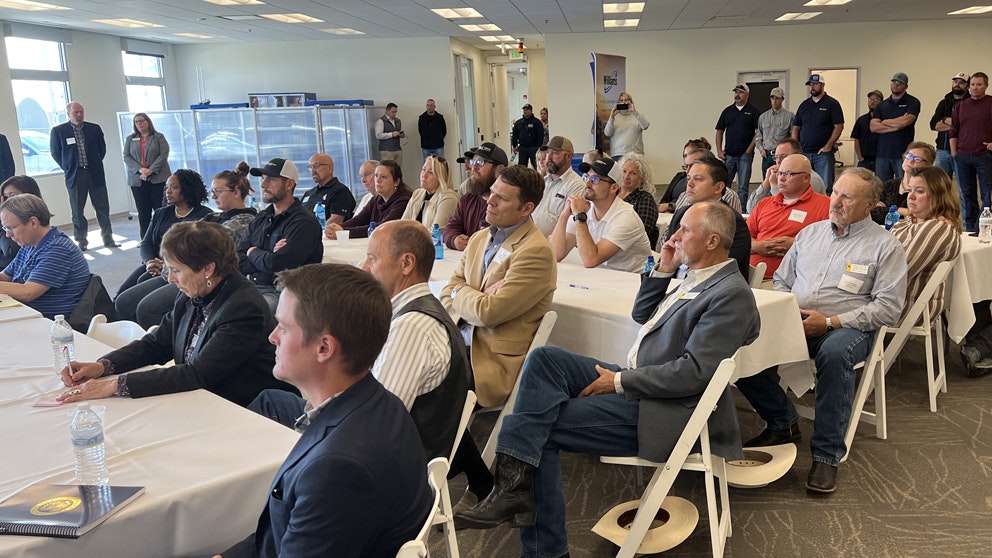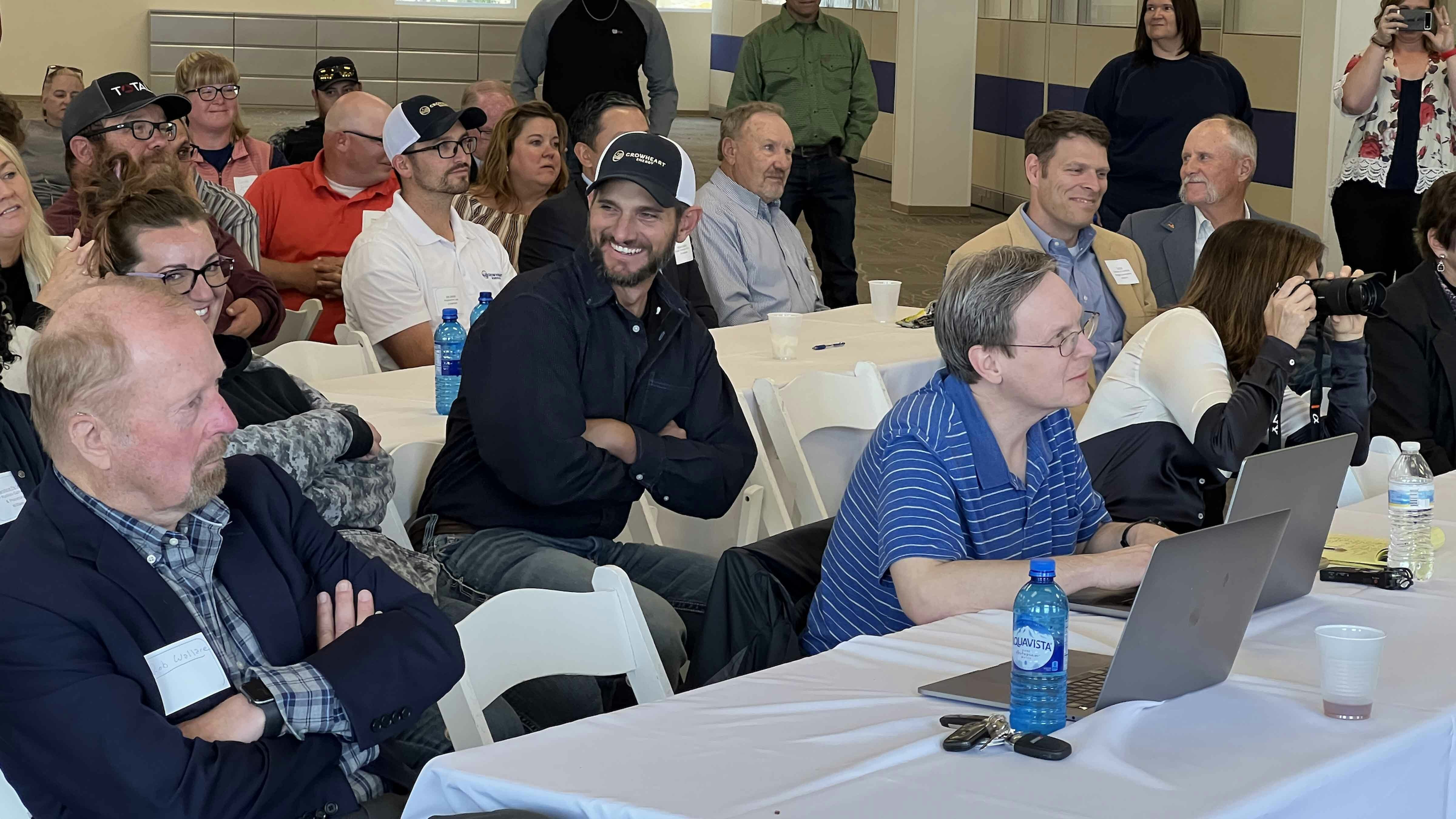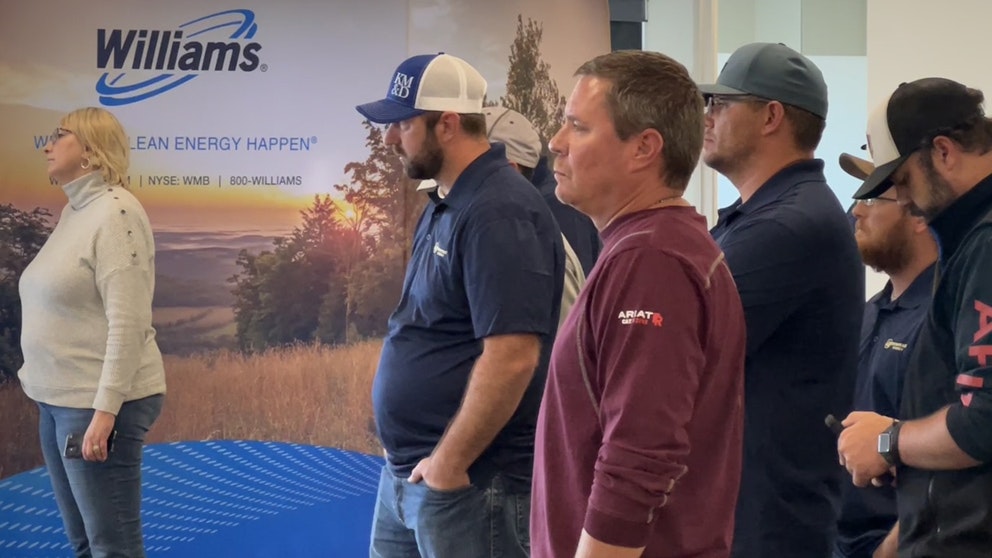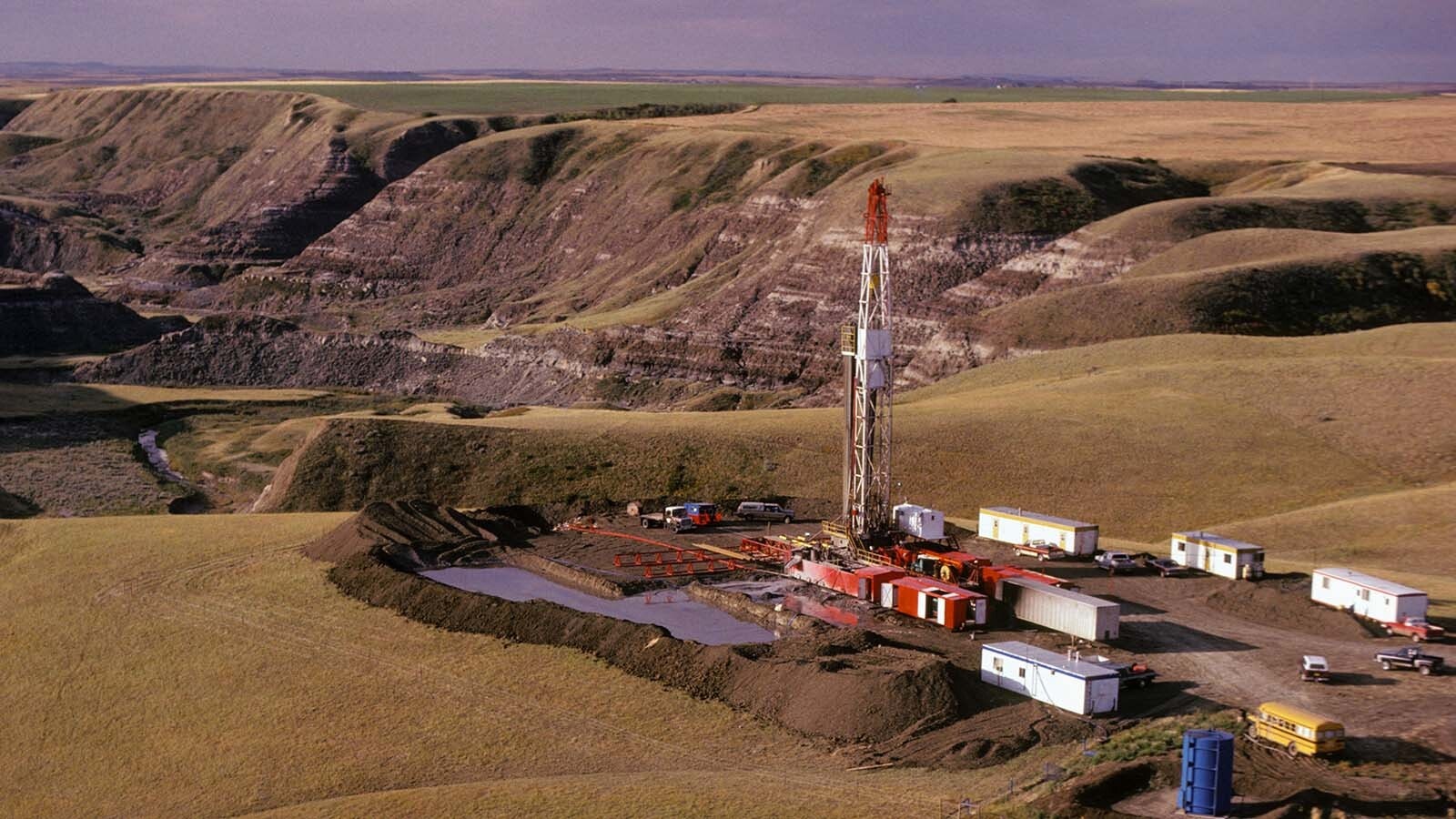There’s a pot of gold in the dusty landscape of Wamsutter. Really.
Billionaire Warren Buffet’s Berkshire Hathaway Energy business has an interest in the natural gas distribution hub in Wamsutter — not in owning the hub, but in a broader effort by Tulsa-based Williams Cos. Inc. to invest $300 million to expand the distribution system’s reach to places starved for natural gas.
Think California or Las Vegas.
Or the Pacific Northwest, where a major hydrogen hub is being built by a consortium of companies with $1.2 billion in backing from the U.S. Department of Energy.
Buffet’s energy unit, which owns PacifiCorp — parent of Rocky Mountain Power, an electric utility covering most of Wyoming — also owns Salt Lake City-based Kern River Gas Transmission Co., which is a key business that will play a critical role in the Williams expansion at Wamsutter.
The billionaire’s portfolio in Wyoming already includes an electric utility, coal-fired power plants and wind and solar farms. Now add a natural gas transmission line.
Nobody’s Talking, But It’s A Big Deal
Kern River owns a 1,679-mile-long natural gas pipeline that extends from southwestern Wyoming to its terminus near Bakersfield, California, the northern suburban doorstep to Los Angeles, the second largest city in the United States, and the more than 20 million people who live throughout Southern California.
A Kern River spokeswoman declined to comment on plans to connect her company’s natural gas transmission line with one that extends from the Williams-owned Echo Springs plant located just 8 miles southeast of Wamsutter.
“If they are not going to talk about it, then it is not our place to talk about them,” the spokeswoman said.
Williams officials did not respond to telephone calls and emails to answer questions about its $300 million project.
Nonetheless, filings submitted to the U.S. Securities and Exchange Commission and other agencies by Williams paint a picture of national importance for the natural gas distribution network that the energy company wants to spend hundreds of millions of dollars on to upgrade in Wyoming.
One regulatory filing states that Kern River is building a “new delivery point” near an existing compressor station operated by Williams in Opal, about a 20-minute drive east of Kemmerer where Buffet’s billionaire friend Bill Gates has invested in what could become the nation’s first licensed nuclear power plant in decades.
Compressor stations are placed strategically within a gathering and transportation pipeline network to help boost pressure and increase the flow of gas to a thirsty natural gas market — wherever that is. Williams wants to build several gas-fired turbine compressor units along the transmission line. Individual producing well sites also feed natural gas to compressor stations.
In recent months, some environmental concerns have emerged along the Wyoming route as permits have been submitted with state and federal agencies, according to regulatory filings with the U.S. Federal Energy Regulatory Commission (FERC), the agency that regulates natural gas and high-voltage power lines.
Wyoming’s Department of Environmental Quality wants a thorough analysis of groundwater and surface water impacts of the project, according to a letter it submitted to FERC in January.
The Wyoming Game and Fish Department requested adherence to the protection of wildlife in the vicinity of the project. Antelope migration and eagle nesting were pointed out.
Cathy Greene, city planner of Rock Springs, told Cowboy State Daily that she wants to know of any proposed additions or changes that Williams wants to make within the city’s existing Blairtown railyard, where the Union Pacific railroad has passed through for more than a century when coal was the main thing in the region.
Today’s thing is trona.
Connecting With California
The Williams project is formally known as the Overthrust Westbound Compression Expansion Project, and includes several major upgrades to the company’s gas transmission pipeline from Wamsutter to Wyoming’s southwestern border with Utah.
Kern River is working on upgrades in Rock Springs that will connect with the Overthrust project.
Although representatives with Williams did not respond to inquiries about the project, the company has outlined in a general way how the Wamsutter expansion will serve western gas markets, according to regulatory filings with federal and state agencies.
In a filing with the U.S. Securities and Exchange Commission on Feb. 21, Williams disclosed that it filed an application with FERC in November to get permission to expand its existing gas line through small towns like Rock Springs and Opal.
Williams said in the filing that it expects to place the project into service as early as late 2025, “assuming timely receipt of all necessary regulatory approvals.”
An upgraded natural gas transmission line with added compressor stations means Williams can more easily slide through the bottlenecks with its natural gas.
Once completed, the project is expected to move an additional 325,000 dekatherms per day of year-round transportation capacity on the company’s existing mainline to western and northwestern gas markets, according to a notice published by FERC in the government’s bible of rules, called the Federal Register.
The 325,000 dekatherms is a lot of gas.
A dekatherm is the equivalent of 1 million British thermal units (BTU), whic is a standard measurement for volume in the natural gas business.
In total, Williams wants to move an extra 325 billion BTUs out of Wyoming to the Western U.S. This is the equivalent of heating an estimated 3.3 million 2,000-square-foot homes.
Another potential user of natural gas over the expanded Overthrust line are “new power generation and industrial end-users in Wyoming,” and existing or new utility demand on the West Coast, according to a Feb. 15 letter submitted to FERC by a Williams executive.
One example is Rocky Mountain Power’s aging Jim Bridger power plant, located 10 miles north of Point of Rocks in southwestern Wyoming. The plant is now being converted to a natural gas-fired plant from a coal-burning one.
Handshake Deal
The $300 million Overthrust project comes amid the backdrop of a lot of handshaking in Wyoming.
The roots of the project were first outlined in Wamsutter under the glare of camera lights, with few details explained as to what Overthrust would do.
A year-and-a-half ago, Wyoming Gov. Mark Gordon stood shoulder-to-shoulder with Chad Zamarin, a newly promoted official with Williams who now holds the title of executive vice president of corporate strategic development, in the sparsely populated town of Wamsutter.
The city has historically been known as a hub for sheep ranching, uranium exploration, oil production and natural gas development.
In his stump speech from 2022, Gordon articulated his energy vision for Wyoming’s future in the city.
“Wamsutter is ground zero for the future of this country and the future of energy,” Gordon said at the Sept. 15, 2022, gathering.
This also is where Zamarin dropped the blockbuster news that Williams would invest $300 million over the next two years in its natural gas distribution system in the state.
“We’re bringing development back,” said Zamarin, whose company earned $3.3 billion in profit on $11.4 billion in revenue last year and has claimed to handle 30% of natural gas in the U.S.
That’s essentially where public talk of the $300 million investment ended.
Wyoming Left Out
Gordon’s office has referred questions to Williams about its investment. Even Wamsutter Mayor Chip Roney, whose city is in the shadow of Williams’ Echo Springs plant, did not return calls.
As a matter of context following the Wamsutter gathering, Wyoming began firming up involvement in a fiercely contested national competition to grab a share of $7 billion to kickstart the production and use of “green” hydrogen, viewed as an important fuel source for cutting pollution from heavy industry.
Williams had thrown its name in the ring for a slice of the cash offered by the Biden administration.
In October, the Department of Energy awarded lucrative contracts to regional clean hydrogen hub projects in the East and in the Pacific Northwest, where Williams was a participant in the bidding process for each.
Left out of the mix was Wyoming – even though Williams had rubbed shoulders with the Cowboy State on bidding to build a regional hydrogen hub.
The Cowboy State had hoped to have a role in this bonanza given its wealth in energy resources.
Wyoming was disappointed, especially since the state had joined with Colorado, New Mexico, Utah and eight private companies to apply for $1.25 billion from the DOE to create the Western Interstate Hydrogen Hub.
The lost sparked a bitter comment last year from State Rep. Donald Burkhart, R-Rawlins, who chairs the Minerals, Business and Economic Development Committee, and who complained of the state being left off the list of winners for the hydrogen hub.
“It’s more of the Biden administration’s war on the West and any state that doesn’t produce the energy he wants,” Burkhart said.
Burkhart did not respond to phone calls or an email for comment on his latest thoughts on the natural gas dust-up.
Pat Maio can be reached at pat@cowboystatedaily.com.

